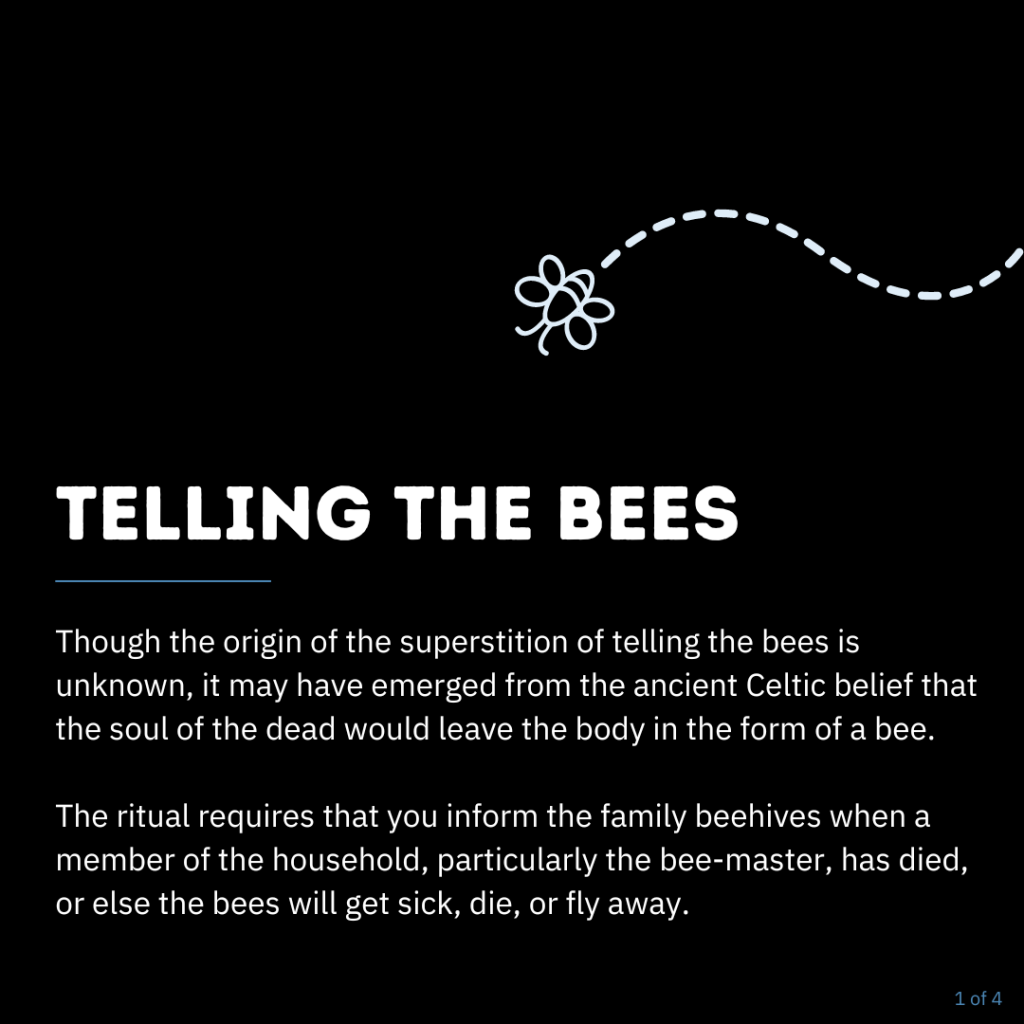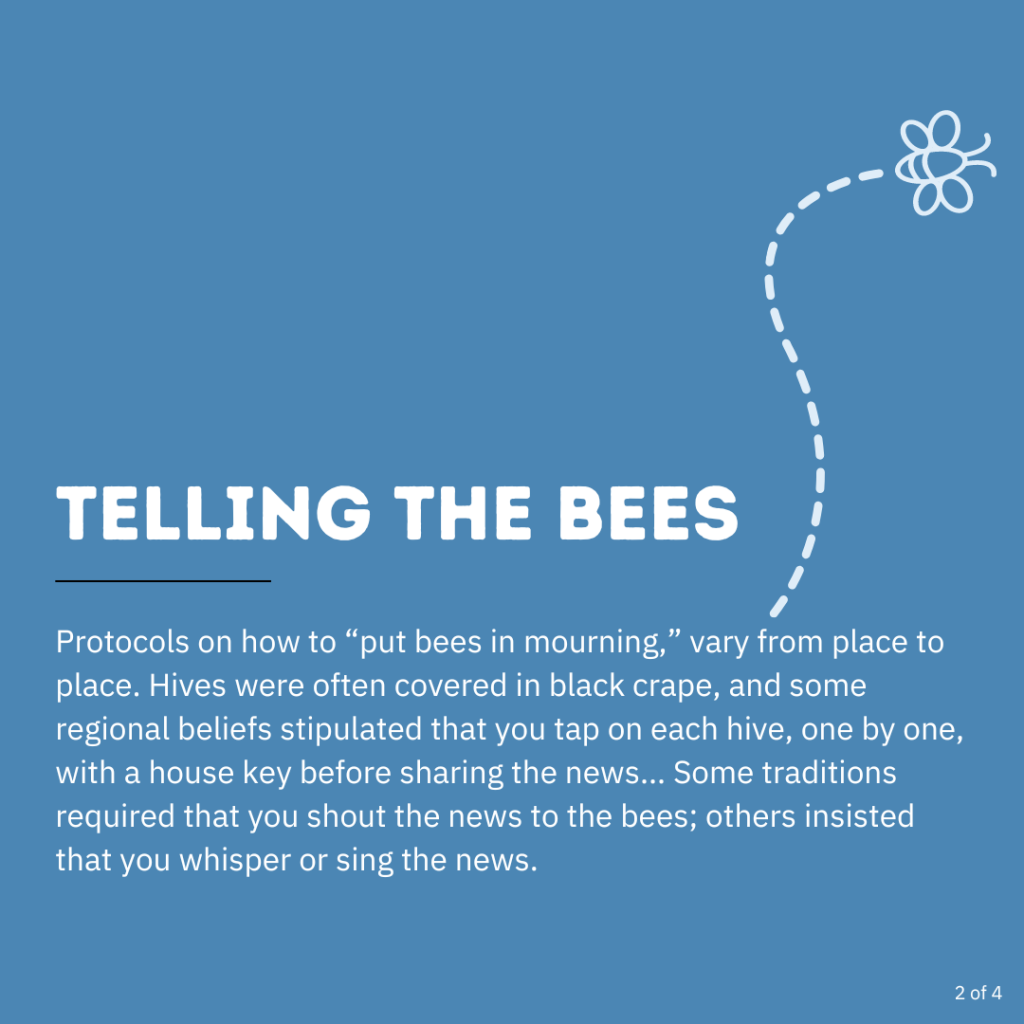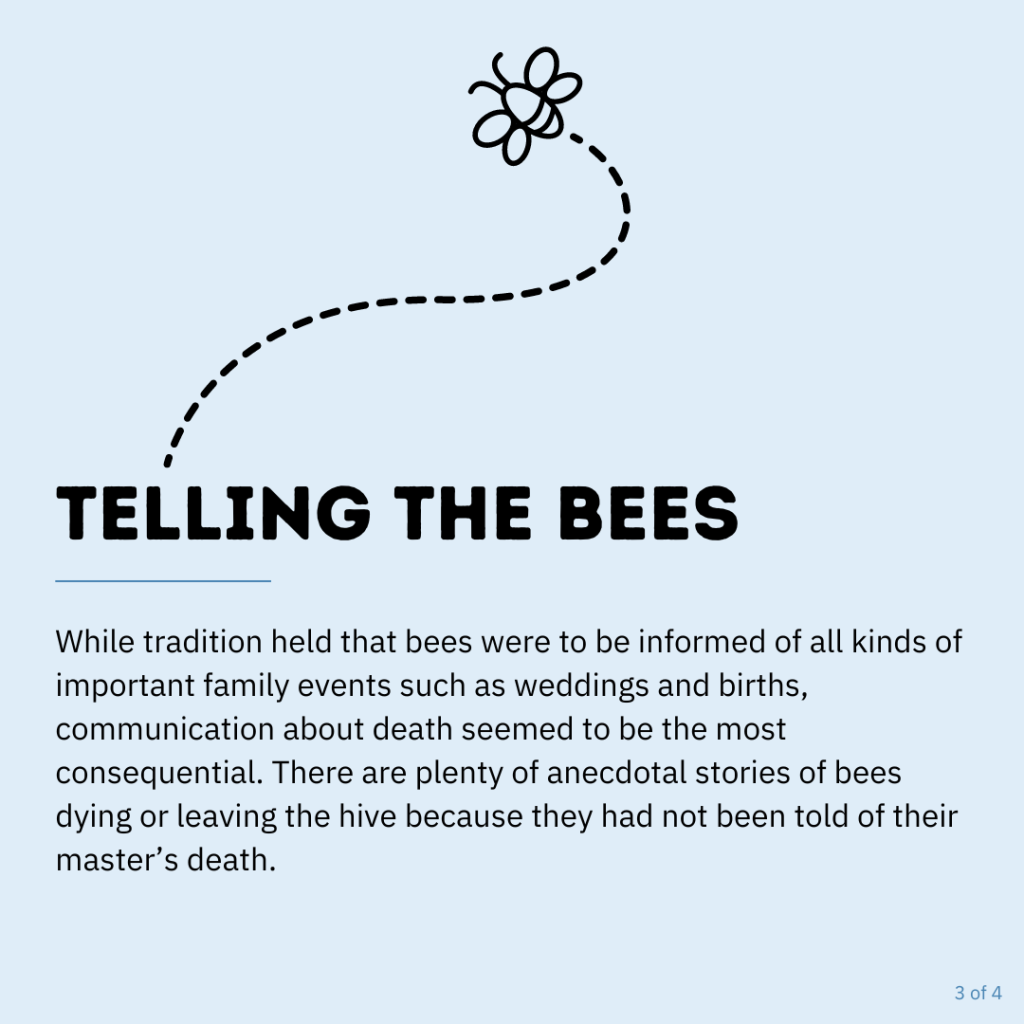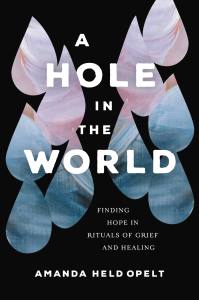A long-held grief tradition the royal family still observes
The world has watched as Queen Elizabeth has been laid to rest. News channels have covered every aspect of the Queen’s passing from family relationships, who is caring for the corgis, and even how the Queen’s beehives took the news.
“Telling the Bees” is a long-held grief tradition that dates back centuries, and–as it turns out–is still observed on the grounds of Buckingham Palace. The Daily Mail reports how John Chapple, the palace bee-keeper, “placed black ribbons tied into bows on the Queen’s hives, home to tens of thousands of bees, before informing them that their mistress had died and that a new master would be in charge from now on.”
While foreign to many, the practice of Telling the Bees has deep significance for mourners. Flip through this slide deck to learn more about this long-held grief observance from Amanda Opelt, author of A Hole in The World: Finding Hope in the Rituals of Grief and Healing.
TELLING THE BEES
1. Origin
Though the origin of the superstition of telling the bees is unknown, it may have emerged from the ancient Celtic belief that the soul of the dead would leave the body in the form of a bee.
The ritual requires that you inform the family beehives when a member of the household, particularly the bee-master, has died, or else the bees will get sick, die, or fly away.
2. Protocol
Protocols on how to “put bees in mourning,” vary from place to place. Hives were often covered in black crape, and some regional beliefs stipulated that you tap on each hive, one by one, with a house key before sharing the news… Some traditions required that you shout the news to the bees; others insisted that you whisper or sing the news.
3. Timing
While tradition held that bees were to be informed of all kinds of important family events such as weddings and births, communication about death seemed to be the most consequential. There are plenty of anecdotal stories of bees dying or leaving the hive because they had not been told of their master’s death.
To learn more about the practice of Telling the Bees and other grief traditions, download a free chapter from A Hole in the World by Amanda Held Opelt.
In a raw and inspiring reflection on grief–selected by Publishers Weekly as one of the best books of the year–a mourning sister processes her personal story of loss by exploring the history of bereavement customs.
When Amanda Held Opelt suffered a season of loss—including three miscarriages and the unexpected death of her sister, New York Times bestselling writer Rachel Held Evans—she was confronted with sorrow she didn't know to how face. Opelt struggled to process her grief and accept the reality of the pain in the world. She also wrestled with some unexpectedly difficult questions: What does it mean to truly grieve and to grieve well? Why is it so hard to move on? Why didn’t my faith prepare me for this kind of pain? And what am I supposed to do now?
Her search for answers led her to discover that generations past embraced rituals that served as vessels for pain and aided in the process of grieving and healing. Today, many of these traditions have been lost as religious practice declines, cultures amalgamate, death is sanitized, and pain is averted.
In this raw and authentic memoir of bereavement, Opelt explores the history of human grief practices and how previous generations have journeyed through periods of suffering. She explores grief rituals and customs from various cultures, including:
- the Irish tradition of keening, or wailing in grief, which teaches her that healing can only begin when we dive headfirst into our grief
- the Victorian tradition of post-mortem photographs and how we struggle to recall a loved one as they were
- the Jewish tradition of sitting shiva, which reminds her to rest in the strength of her community even when God feels absent
- the tradition of mourning clothing, which set the bereaved apart in society for a time, allowing them space to honor their grief
As Opelt explores each bereavement practice, it gives her a framework for processing her own pain. She shares how, in spite of her doubt and anger, God met her in the midst of sorrow and grieved along with her, and shows that when we carefully and honestly attend to our losses, we are able to expand our capacity for love, faith, and healing.





